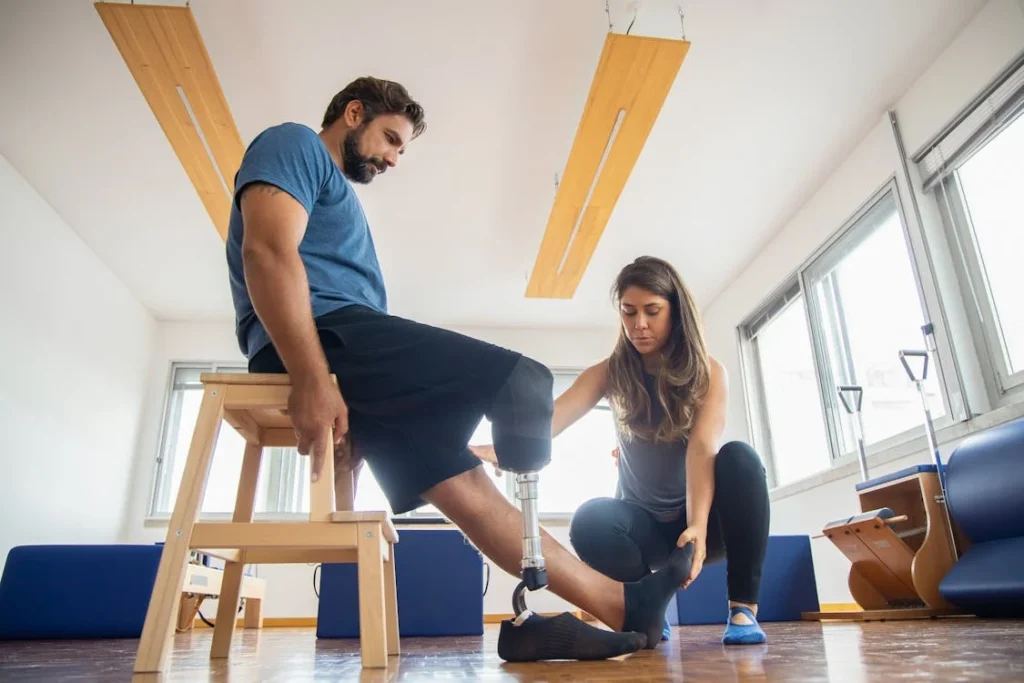When someone faces the loss of a limb, there are two main paths forward: trying to save the limb through surgery (called limb salvage) or removing the limb and using a prosthetic. Both options come with their own journeys. Each one affects how long recovery takes, how someone heals, and how they get back to daily life.
The choice between limb salvage and prosthetic rehabilitation isn’t always easy. Doctors look at many things—like the type of injury, how much damage there is, and what will give the person the best life going forward. But no matter the choice, everyone wants to know one thing: how long will recovery take?

Understanding Recovery After Limb Salvage Surgery
Limb salvage surgery is a major decision. It usually involves trying to save a badly injured arm or leg by using surgeries, metal implants, skin grafts, or tissue transfers.
In many cases, it’s done to avoid amputation and keep the natural limb. But the road to recovery can be long and filled with many steps. Let’s break down what that journey looks like.
What Happens After the Surgery
After limb salvage surgery, recovery begins in the hospital. Patients often stay for several days or even weeks, depending on how complex the procedure was.
During this time, doctors check for signs of infection, blood flow, and whether the limb is healing properly. Pain management is important in the early days, as the body is still adjusting and inflammation is common.
Once the wound starts to heal, physical therapy usually begins. But it may be gentle at first. The focus is often on moving nearby joints and keeping muscles from getting weak.
Many people also start using support devices, like crutches or wheelchairs, because they can’t put full weight on the limb yet.
Healing Takes Time
The body needs time to heal after such a major procedure. Bone and tissue take weeks or even months to rebuild. In many cases, more than one surgery is needed—especially if the first one doesn’t go as planned or if the limb doesn’t heal the way doctors hoped.
This can slow down recovery and make the process even longer.
Infections are one of the biggest risks. If bacteria get into the wound, it can lead to serious problems. Sometimes the body rejects metal implants.
Sometimes blood doesn’t flow well enough to keep the tissue alive. If these problems happen, healing slows down or even stops. That’s when doctors may need to go back in and do more surgeries.
Physical Therapy and Daily Challenges
Physical therapy is a big part of limb salvage recovery. It helps patients regain strength, balance, and movement. But progress can be slow.
The limb might feel stiff, sore, or weak for a long time. Some people don’t regain full function and have to learn how to work around certain limitations.
Therapy often includes small steps, like moving toes or fingers, standing up with help, or learning how to walk again. The exercises may seem simple, but they’re important for long-term improvement.
As strength returns, therapy becomes more active—maybe walking short distances, climbing stairs, or doing more intense movements. Still, it can take months before someone is fully mobile.
Some patients may deal with long-term pain, nerve issues, or sensitivity in the limb. This adds another layer to recovery. It’s not just physical—it’s mental and emotional too.
People often feel frustrated, tired, or discouraged. Support from family, therapists, and doctors makes a big difference.
The Role of Patience and Support
Limb salvage is often a long and winding path. It requires patience, discipline, and strong support. Progress doesn’t happen overnight, and setbacks are common.
But with the right care and guidance, many patients do recover well. Some go back to work. Some return to hobbies they love. Others even take up new ones.
Still, it’s important to be realistic. Not every salvaged limb works like it used to. Some people still walk with a limp or need braces. Others may never regain full strength. But for many, just keeping their own limb is worth the effort.
Let’s now take a look at how prosthetic rehabilitation compares, both in pace and in experience.
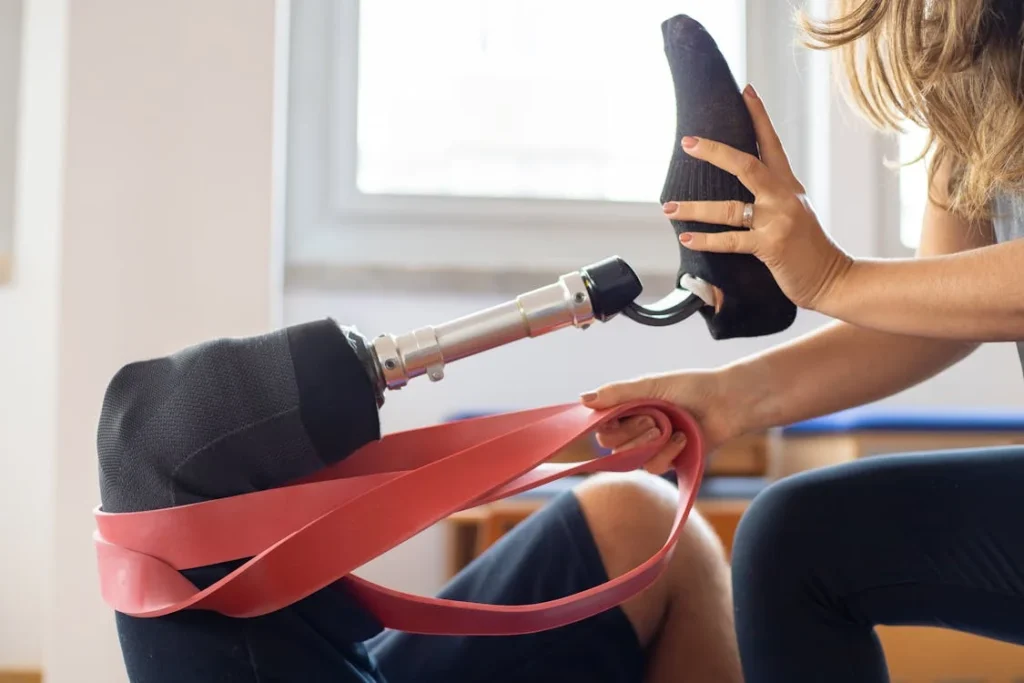
The Path to Recovery Through Prosthetic Rehabilitation
Choosing a prosthetic journey usually begins after an amputation. While the idea of losing a limb sounds difficult—and it is—it’s also the start of a new chapter.
For many people, using a prosthetic opens doors to independence, movement, and a return to everyday life. The recovery path here is different from limb salvage, but it also takes time, care, and strong will.
What Happens After Amputation
Right after the amputation surgery, the focus is on healing the residual limb—the part of the arm or leg that remains. This is sometimes called the “stump,” though many people prefer “residual limb.”
Doctors make sure the wound closes well, the swelling goes down, and there’s no infection. Pain control is also very important in these first few weeks.
Unlike limb salvage, amputation usually involves fewer surgeries. This can mean a smoother early recovery, though everyone heals at their own pace. Once the wound starts to heal, the next steps begin—both physical and emotional.
Getting Ready for a Prosthetic
Before someone gets a prosthetic, their limb needs to be in the right shape and condition. This part of recovery includes shrinking and shaping the limb using special wraps or sleeves.
This helps prepare it to fit into a prosthetic socket comfortably. It might seem like a small step, but it plays a big role in how the device fits and feels later on.
People also work on strengthening the rest of their body. After all, using a prosthetic takes energy and balance. If someone lost a leg, they’ll practice standing and shifting weight.
If it’s an arm, they’ll learn how to lift, carry, and stabilize in new ways. Physical therapy helps prepare them for the device and teaches new ways to move.
Fitting the Prosthetic and Learning to Use It
When the residual limb is ready, the first prosthetic fitting takes place. This is a big moment. A prosthetist—the person who designs and adjusts prosthetics—carefully makes sure the device fits well.
It’s not always perfect on the first try, and adjustments are common. Comfort and function are the main goals.
Once the prosthetic is in place, training begins. At first, it might feel awkward or even uncomfortable. But just like learning to ride a bike, practice brings progress. Patients start with basic movements: standing, stepping, or gripping objects.
Over time, these actions feel more natural. As therapy continues, people walk longer, climb stairs, pick up smaller items, and begin using their device in real life.
It’s important to know that prosthetic rehab is more than just movement—it also involves building confidence. Many people feel unsure or worried when they first start using a prosthetic.
But each day brings small victories. Putting it on alone. Walking to the corner. Lifting a cup. These moments matter deeply.
Emotional Healing and Support Systems
Just like with limb salvage, prosthetic rehab includes emotional recovery. People often go through a wide mix of feelings—relief, grief, hope, fear, and pride. Counseling, peer groups, and family support help a lot during this phase. No one should feel they have to do it alone.
Having a good rehab program makes a big difference. Programs that mix physical therapy with mental health support, patient education, and even gamified training—where therapy feels more like play—can speed up progress.
These methods help people stay motivated and enjoy the process rather than dread it.
The first few months are key. That’s when the body and mind adapt to the change. But many people are surprised at how quickly they start to feel like themselves again.
With each step, each grasp, and each new routine, the prosthetic becomes less of a tool and more of an extension of the body.
Getting Back to Daily Life
Prosthetic rehabilitation often allows people to return to everyday life sooner than those who go through limb salvage. This is especially true when the rehab process is guided and consistent.
Many users are able to go back to school, work, or other activities within a few months. Some may take longer, but most regain a strong level of independence.
Some users even take on new sports, hobbies, or careers. With new technologies and lighter, smarter designs, modern prosthetics are more comfortable and capable than ever before.
While challenges still exist, the overall path often brings faster, more predictable results compared to limb salvage.
Of course, prosthetics also need care and sometimes repairs. But in many cases, users find the trade-off is worth it.
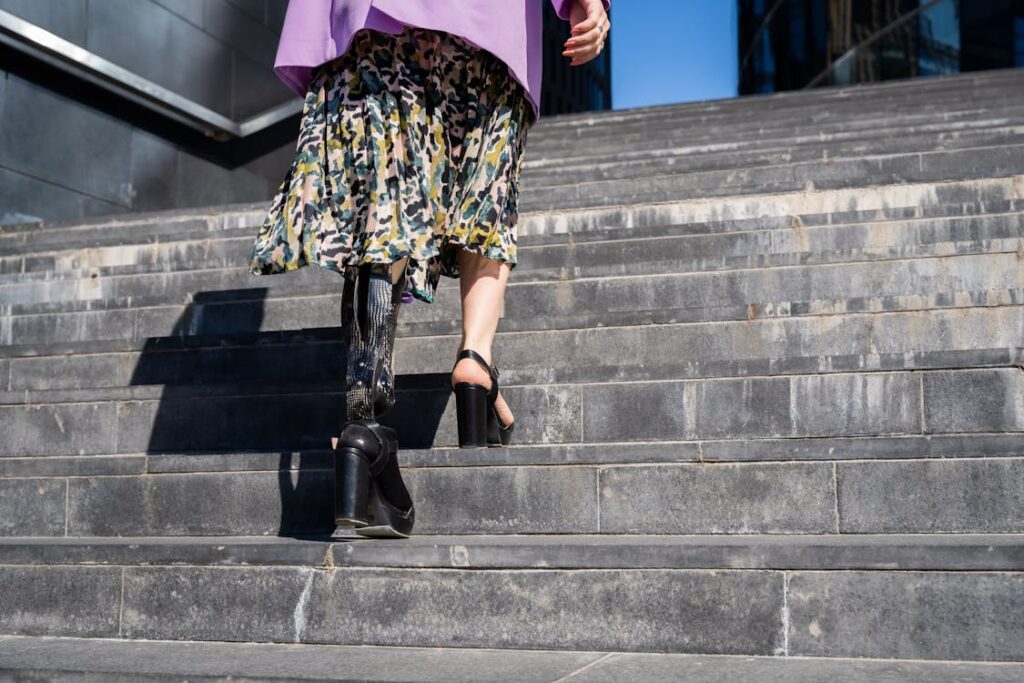
Comparing Recovery Times: Limb Salvage vs. Prosthetic Rehabilitation
Recovery time isn’t just about how fast someone leaves the hospital. It’s about when they can walk again, work again, or just live life on their own terms. For some people, that means walking without pain.
For others, it means being able to carry groceries, play with their children, or ride a bike. Recovery is personal—and the path looks different for everyone.
Still, when we step back and look at both options, we begin to see patterns. And those patterns help us understand how long recovery might take in each case.
Limb Salvage Often Takes Longer
Limb salvage may seem like the better choice because it keeps the natural limb. But the process is often slower, more uncertain, and more complex than people expect.
Many patients need multiple surgeries over several months. There’s usually a long hospital stay at first, followed by weeks or months of physical therapy.
Even after all that, the limb might not work as it once did. Some people need braces, walking aids, or support from caregivers. Some may never regain full strength or range of motion.
Infection or poor healing can also slow things down. In some cases, after months of trying, the limb still doesn’t improve—and amputation is considered later.
That doesn’t mean limb salvage is a bad choice. For some injuries or illnesses, it’s the only choice. And for many people, keeping their own limb—even with some loss of function—feels worth it. But in terms of time and certainty, it often comes with more delays and risks.
Prosthetic Rehabilitation Can Be Quicker and More Predictable
Prosthetic rehabilitation generally follows a clearer timeline. Once the residual limb heals—which usually takes about 6 to 8 weeks—preparation for a prosthetic begins. With a well-structured rehab program, many people start walking or using their new arm in a few months.
By three to six months, many users feel confident doing basic tasks. Some people even reach full independence sooner than that. They might not regain every ability they had before, but many gain strong function and comfort with their prosthetic.
This can make recovery feel more achievable, especially when the device fits well and therapy is consistent.
That said, not all prosthetic journeys are easy. Fitting issues, discomfort, or emotional adjustment can slow things down. But compared to the long and uncertain nature of limb salvage, prosthetic recovery tends to be steadier and more straightforward.
The Mental Side of Recovery
Recovery isn’t just physical. Whether someone goes through limb salvage or gets a prosthetic, there’s a mental journey too. Fear, grief, anger, and hope all show up at different times.
Some people struggle with body image. Others worry about what others will think. These feelings are normal, and they don’t always follow a schedule.
But in many cases, people with prosthetics adjust mentally faster. That’s because their recovery is more visible. Each new step with a prosthetic is a small win.
Being able to walk to the store again, cook dinner, or go to work brings back confidence. These daily moments matter—and they often come earlier with prosthetic users.
Those who go through limb salvage sometimes have a harder time emotionally. They may feel like they’ve been in recovery for months without much change.
Setbacks like infections or slow healing can be discouraging. That’s why support from doctors, therapists, and loved ones is so important, no matter which path someone takes.
Real-Life Outcomes
When we compare the long-term outcomes of both paths, it really depends on the person. Some people with salvaged limbs regain strong function and live full, active lives. Others continue to struggle with pain, weakness, or mobility issues.
Prosthetic users often report higher satisfaction when the rehab process is smooth and the prosthetic fits well. They may face fewer medical complications in the long run. And with ongoing support, they often gain back a strong level of independence.
There’s no “better” option for everyone. It’s about the right choice for the right person at the right time. Factors like age, injury type, health conditions, and personal goals all play a role in deciding what path leads to the best recovery.
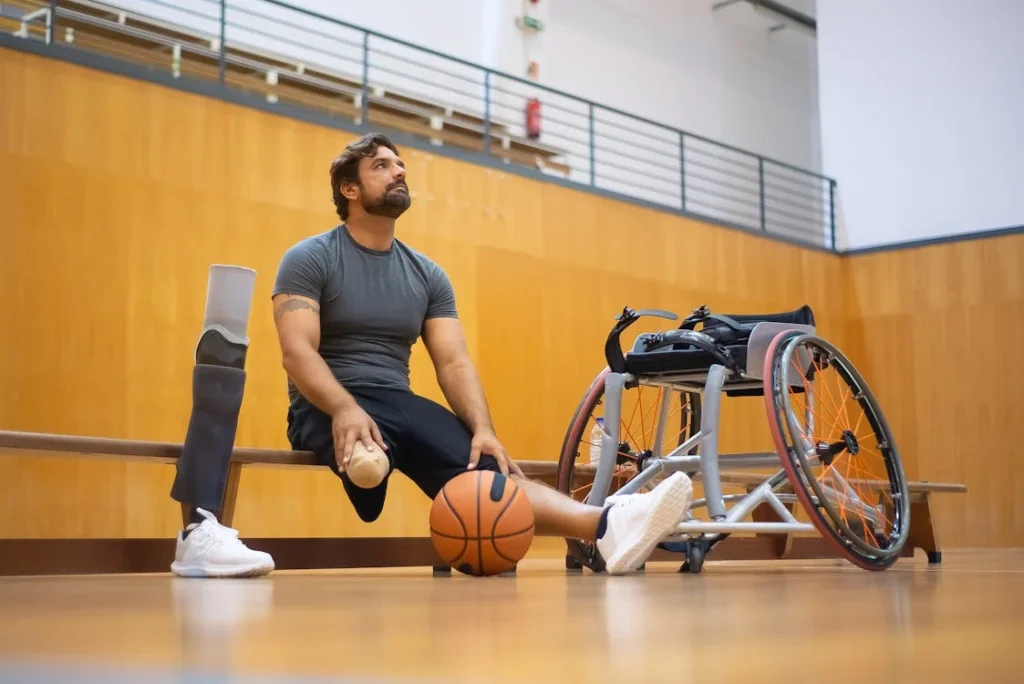
Key Factors to Consider When Choosing Between Limb Salvage and Prosthetic Rehabilitation
Deciding between trying to save a limb or going forward with amputation and prosthetic rehabilitation is never easy. It’s not just a medical decision. It’s a life decision.
It involves thinking about today, but also five, ten, or even twenty years from now. The good news is that people don’t have to make this decision alone. Doctors, therapists, and families can help. But understanding the key factors makes the path clearer.
The Severity and Type of Injury
Some injuries leave very little choice. For example, if the bones, muscles, or blood vessels are too badly damaged, doctors may recommend amputation right away. In other cases, the injury is severe but still has a chance to heal with surgery, and limb salvage becomes an option.
Sometimes the limb looks “okay” on the outside, but internal damage makes recovery unlikely. That’s why doctors use scans, blood tests, and years of experience to understand what’s really going on.
But even with all that, there’s still some uncertainty. It’s not always possible to know exactly how well a limb will recover, even with surgery.
Risk of Complications
Limb salvage comes with higher medical risks. These include infections, poor healing, nerve damage, and the need for more surgeries. Each of these can delay recovery or make it harder to return to normal life.
Some people end up needing amputation later anyway, after months or even years of struggling with complications.
With prosthetic rehabilitation, the risks are different. There can be pain in the residual limb, problems with the fit of the prosthetic, or issues adjusting to the new way of moving.
But overall, the risks tend to be fewer and easier to manage—especially with a strong support system in place.
Recovery Time and Lifestyle
People who want to get back to work, family life, or school quickly may find that prosthetic rehab offers a shorter and more predictable path. Once healing begins, progress is steady. Most people can see improvement week by week.
Limb salvage can offer more “natural” movement if recovery is successful, but the path is longer and less certain. Recovery often feels like a rollercoaster. Some weeks bring progress; others bring setbacks. It takes a lot of patience and mental strength.
A person’s lifestyle matters too. Someone who wants to stay active, play sports, or travel may need to think about how each option fits into their future.
Some prosthetic users go on to climb mountains or run marathons. Others prefer simpler goals, like walking with ease or cooking dinner again. Whatever the goal, the recovery path should support it.
Age and Overall Health
Younger people often recover faster, whether it’s from limb salvage or prosthetic rehab. Their bodies tend to heal more quickly, and they may have fewer health issues that slow things down. But age isn’t the only factor.
Someone with diabetes, heart problems, or poor circulation may have a harder time healing after limb salvage. In those cases, doctors may lean toward amputation to avoid further complications.
On the other hand, a healthy older adult might still do well with either path if they have good support and motivation.
It’s also worth thinking about long-term health. If someone chooses limb salvage but needs frequent hospital visits or surgeries over the next few years, that can wear down both the body and the spirit.
Prosthetic rehab may offer a smoother long-term journey, even if the early days are tough.
Emotional Readiness
Both paths require emotional strength, but in different ways. People choosing limb salvage need to be ready for a long process with ups and downs. They may face frustration if progress is slow or if the limb doesn’t work the way they hoped.
Prosthetic users go through a major emotional shift too. Accepting the loss of a limb takes time. But for many, the ability to move forward quickly with rehab gives a sense of control. As they learn to use their device and regain independence, confidence builds.
Talking to others who’ve been through it—whether they chose limb salvage or a prosthetic—can help a lot. Their real-life experiences often offer more insight than any medical chart.
Financial and Practical Considerations
Money is not the only concern, but it is a real one. Limb salvage surgeries can be expensive, especially if multiple operations are needed. The cost of hospital stays, medications, and long-term therapy adds up. In some cases, insurance may cover these, but not always.
Prosthetics also come with costs. Fitting, repairs, replacements, and therapy are part of the journey. But many prosthetic users say that, over time, it becomes more manageable—especially when they regain the ability to work or care for themselves again.
Access to care is another issue. If someone lives far from a good hospital, limb salvage may be harder to manage. Prosthetic care can sometimes be more flexible, especially if there are clinics nearby that offer fitting and rehab support.
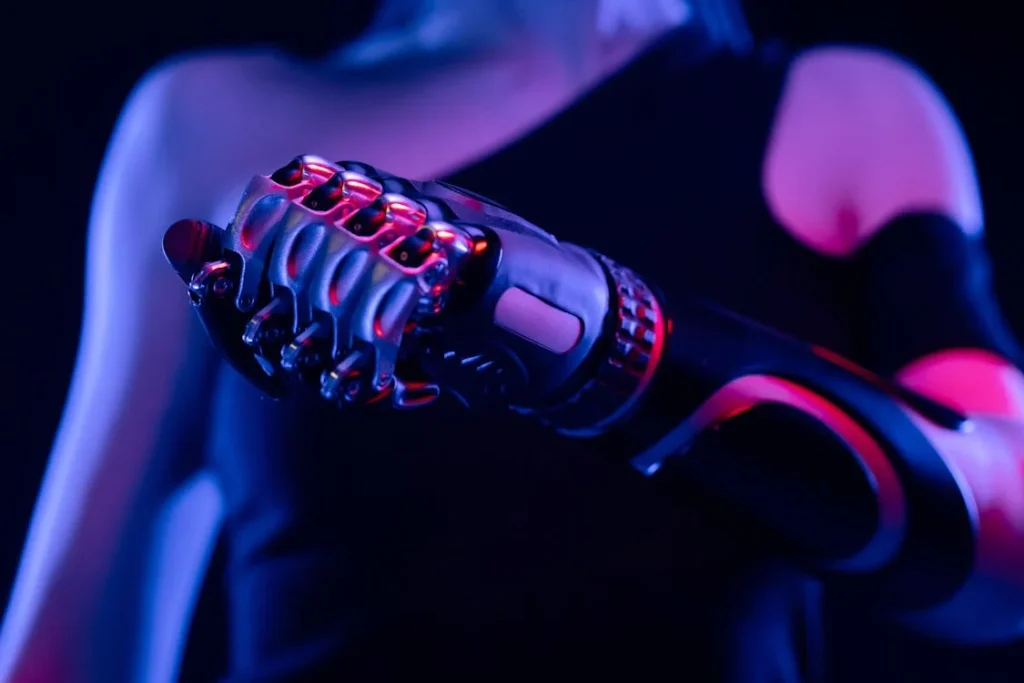
The Role of Technology in Shaping Recovery Outcomes
Modern medicine and engineering are changing the way people recover after losing or nearly losing a limb. In both limb salvage and prosthetic rehabilitation, new tools and techniques are speeding up recovery, improving comfort, and helping people feel more in control of their lives.
Technology doesn’t remove the hard work of healing, but it makes the journey a bit smoother—and sometimes, a lot faster.
Innovation in Limb Salvage Procedures
In the past, limb salvage relied mostly on traditional surgery and long periods of rest. But now, newer surgical tools and techniques make the process more precise and less traumatic for the body.
Microsurgery allows doctors to reconnect tiny blood vessels and nerves more effectively. This increases the chances of the limb surviving and healing properly.
With better planning software, surgeons can also see in more detail where and how the damage has occurred. That helps them act faster and with greater accuracy.
Bone reconstruction has also come a long way. Instead of just using metal plates and screws, doctors now use 3D-printed implants that fit the patient’s body more naturally.
These can shorten healing time and improve function later on. Special scaffolding materials help the body grow new tissue around the damaged area, reducing the need for multiple surgeries.
Some hospitals are even using robotic surgical systems to assist with complex cases. These systems help the surgeon make more exact movements, which can reduce swelling, pain, and healing time after the operation.
Despite all this, limb salvage still depends on how the body reacts. Even with advanced tools, not every limb heals well. But for those who respond positively, technology can significantly cut down recovery time and improve the final result.
Smart Prosthetics and Gamified Rehabilitation
Prosthetic rehabilitation has seen some of the biggest leaps forward, especially in how the prosthetic itself functions. New-generation devices are no longer just mechanical parts. They’re smart systems that respond to the user’s body, movement, and even muscle signals.
Some prosthetics now use sensors that detect electrical signals from muscles in the limb. When the user thinks about moving their hand or foot, the prosthetic responds.
This makes movements feel faster, smoother, and more natural. That ease of use leads to quicker learning and faster return to daily activities.
There’s also a big shift in how people train with prosthetics. Instead of just walking up and down hospital halls, patients are now using game-based rehab tools at home.
These games are designed to make rehab more fun and more effective. People might use a tablet or screen to play balance games, grip challenges, or virtual walking paths—all while using their prosthetic.
The idea behind gamified rehab is simple: when something feels like play, people stick with it longer. And the more time they spend practicing, the faster they improve. This is especially helpful for kids and young adults, but older users benefit too.
Even the socket—the part that connects the prosthetic to the body—has been improved through 3D scanning and printing. Custom sockets now fit better, feel lighter, and are less likely to cause pain or pressure.
That alone makes a huge difference in how fast someone adjusts to their new limb.
Remote support is another major change. In many places, prosthetic users can now connect with their care teams through video calls or mobile apps.
That means faster adjustments, quicker answers, and less time spent waiting for appointments. All of this adds up to a smoother, more efficient recovery.
Bridging the Gap With Personalized Tools
What’s exciting is that some of these technologies are starting to overlap. Techniques from prosthetic design are being used to make better braces and supports for limb salvage patients.
3D printing helps both sides. Motion tracking and wearable devices are being used to monitor recovery progress in real time—whether someone is using their own limb or a prosthetic.
The focus now is on personalization. No two people heal the same way, so the tools and support systems are being tailored to each individual.
This includes rehab programs, devices, and follow-up care. And when recovery feels personal, people tend to feel more involved—and that often leads to better results.

How Location Shapes Recovery: Rural vs. Urban Realities
Where someone lives can play a major role in how they recover—whether they’ve had limb salvage surgery or are adjusting to a prosthetic.
Recovery doesn’t just happen in operating rooms or therapy centers. It happens at home, at work, in the places where people move, rest, and interact with the world. That’s why rural and urban environments can lead to very different experiences.
Access to Medical and Rehab Services
In urban areas, people often live closer to hospitals, rehab centers, and clinics. This can make it easier to attend regular therapy sessions, get follow-up checkups, or make adjustments to a prosthetic.
Most cities also have more specialists, including physical therapists, occupational therapists, and prosthetists who can provide ongoing care.
In contrast, rural areas often have fewer resources nearby. Someone recovering from limb salvage may need to travel hours just to see a surgeon or have imaging tests done.
If they’re using a prosthetic, they might have to wait weeks for a fitting or repair appointment due to limited local services.
The longer travel time, higher transport costs, and fewer appointment slots all add stress. And when therapy becomes harder to reach, people sometimes slow down in their recovery—even if they’re motivated to heal.
Home Environment and Physical Challenges
The physical layout of someone’s home and community also affects their recovery. Urban environments may have better sidewalks, ramps, elevators, and other features that help people with mobility issues.
If someone is using crutches, a walker, or a prosthetic leg, smooth, even paths make a huge difference.
Rural homes, especially in older or hilly areas, can pose real challenges. Uneven ground, narrow doorways, or steps without railings make simple tasks harder.
Some homes may not have running water close by, requiring people to carry buckets or move long distances just to reach the bathroom or kitchen. These added obstacles can slow down recovery and increase the risk of falls or injuries.
People in rural areas may also spend more time outdoors doing physical labor—whether it’s farming, building, or lifting heavy objects.
That type of lifestyle may require faster, more rugged recovery solutions that urban rehab programs aren’t always built for. In this case, a prosthetic might need to be tougher, more flexible, and tailored to the person’s specific needs.
Social Support and Community Impact
Urban areas often have support groups, therapy networks, and events for people with limb differences. Meeting others who have been through similar experiences can be comforting. It helps people feel less alone, ask questions, and share ideas.
In smaller rural communities, these kinds of support systems may be harder to find. Someone might be the only person in their village or town dealing with a major limb injury.
That can feel isolating. Cultural beliefs or misunderstandings around limb loss can sometimes make it even harder for people to talk openly about their situation.
But rural communities also have their strengths. Close-knit families, strong neighbors, and a sense of community responsibility can offer real support.
When everyone comes together to help with transportation, daily chores, or emotional care, it makes a huge difference in the recovery journey.
Technology as a Bridge Between Locations
Thankfully, technology is helping close the gap. Telehealth services now allow people in remote areas to consult with doctors and therapists from home.
Mobile apps are being developed for guided exercises, pain tracking, and prosthetic care tips. Some rehab programs are even using smartphones to deliver custom video routines, turning a living room into a therapy space.
For prosthetic users, mobile adjustment kits and remote troubleshooting support are reducing the need for long-distance travel. For those recovering from limb salvage, virtual wound check-ins and progress tracking help doctors monitor healing without frequent in-person visits.
Still, internet access and digital literacy remain barriers in some areas. To truly level the field, support systems need to be made simpler, more accessible, and available in local languages.
Recovery on Your Own Terms
At the heart of it, recovery should fit the person—not the other way around. Whether someone lives in a busy city apartment or a quiet village home, they deserve a recovery path that works with their lifestyle, not against it.
This means creating flexible rehab plans, making devices easy to maintain, and designing services that meet people where they are. Recovery doesn’t need to look the same everywhere. What matters is that it works—for the person, their family, and their way of life.
Conclusion
The choice between limb salvage and prosthetic rehabilitation is deeply personal. Each path has its own challenges, timelines, and possibilities. Limb salvage may preserve the natural limb but often requires more time, multiple surgeries, and uncertain outcomes. Prosthetic rehabilitation, on the other hand, offers a clearer, often quicker route to independence, especially with today’s advanced devices and training methods.
Recovery is shaped not only by the medical path chosen but also by where someone lives, the support they receive, and how technology is used along the way. There’s no one-size-fits-all answer—just the choice that best fits a person’s life, goals, and environment.
What matters most is that individuals feel supported, informed, and empowered as they heal—not just physically, but emotionally and socially too.



